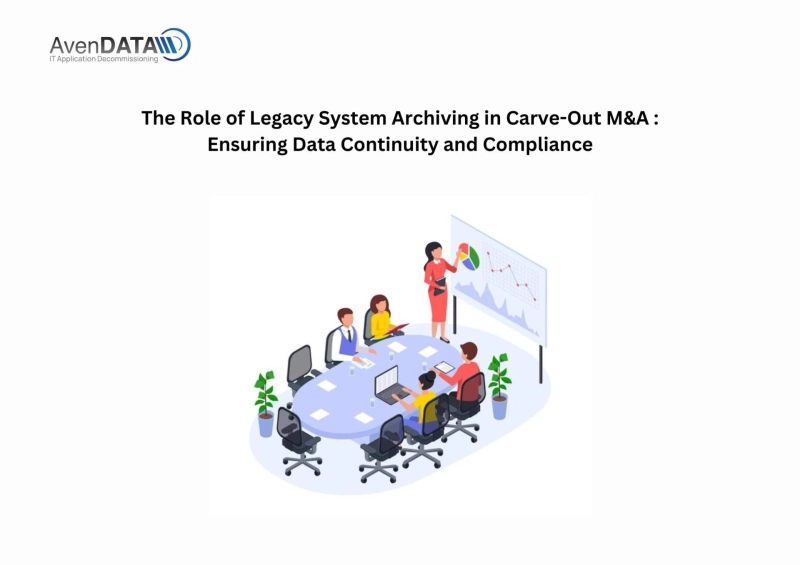Introduction:
As the landscape of mergers and acquisitions (M&A) evolves, carve-outs have become a strategic tool for companies aiming to optimize their operations and unlock hidden value. A critical aspect of successful carve-outs is managing the legacy IT systems associated with the divested business unit. Legacy system archiving emerges as a pivotal solution, ensuring data continuity, compliance, and smooth transitions during these intricate processes.
The Significance of Legacy System Archiving:
Legacy systems often contain a treasure trove of historical data accumulated over the years. During a carve-out, retaining access to this data is crucial for legal, regulatory, and business continuity reasons. Legacy system archiving involves the systematic preservation of data and applications from these systems, making them accessible while ensuring adherence to compliance requirements.
Ensuring Data Continuity:
Carve-outs involve the transfer of various assets, including customer records, contracts, financial data, and operational information. Legacy system archiving ensures that this data remains intact and readily accessible to both the parent company and the carved-out entity. This seamless access to historical information aids in maintaining business operations and serving customers effectively.
Mitigating Compliance Risks:
In today’s regulatory environment, compliance is non-negotiable. During a carve-out, ensuring data compliance becomes more complex due to the transfer of ownership. Legacy system archiving facilitates the retention of historical data in a compliant manner, enabling organizations to meet legal and regulatory obligations even after the carve-out is complete.
Smooth IT Transition:
Legacy IT systems often have intricate connections with various business processes. When carving out a business unit, it’s essential to transition these IT systems smoothly. Legacy system archiving helps in the systematic migration of data and applications, reducing the risk of data loss, downtime, and disruptions.
Benefits Beyond Carve-Outs:
While legacy system archiving is a critical component of carve-outs, its benefits extend beyond this context. Archived data can provide insights into historical trends, customer behavior, and operational efficiency, which can inform future business strategies.
Selecting the Right Solution:
Choosing the right legacy system archiving solution is paramount. Look for a solution that offers data integrity, scalability, security, and regulatory compliance. Collaborating with experts in IT legacy system archiving can ensure a seamless transition and data preservation.
Conclusion:
Legacy system archiving plays a pivotal role in the success of carve-out M&A activities. By ensuring data continuity, compliance, and a smooth IT transition, organizations can navigate the complexities of carve-outs with confidence. As businesses continue to explore strategic restructuring, legacy system archiving remains an invaluable tool to safeguard data, facilitate transitions, and drive growth in a rapidly changing landscape.
#AvenDATA #legacysystems #ITlegacysystem #carveout #sapcarveout #itcarveout #decommissioning #ITdecommissioning #mergersandacquisitions


